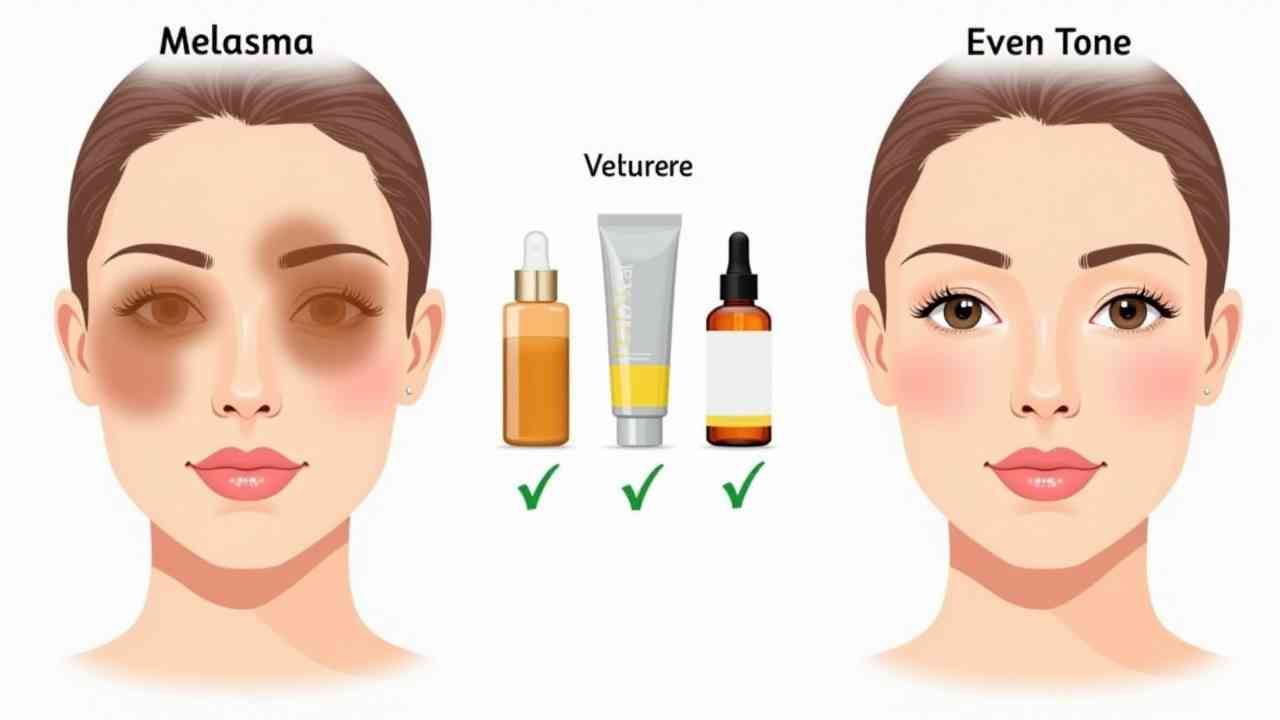
👩⚕️ What Causes Melasma and How to Treat It (A Dermatologist's Guide)
👩⚕️ A Dermatologist's Guide to Melasma: Causes & Treatments 👩⚕️
Melasma is a very common skin condition. It causes brown or grayish-brown patches to appear on the skin. These patches usually show up on the face. The forehead, cheeks, nose, and upper lip are common spots. It is much more common in women than in men.
While it is completely harmless, melasma can be a source of significant frustration. Its appearance can be difficult to manage. So, what causes melasma and how do you treat it? The good news is, there are very effective treatments available. Understanding the triggers is the first step.
This guide will explain the causes of this stubborn condition. We will also cover the most effective, science-backed treatments. Let's start your journey to a more even-toned complexion. ✅
🤔 First, What Are the Main Causes of Melasma?
Melasma is a disorder of pigmentation. It is caused by the overproduction of melanin by your pigment cells (melanocytes). This overproduction is triggered by a combination of factors. The two main culprits are hormones and sun exposure.
How do hormones play a role?
Hormonal fluctuations are a primary driver. This is why melasma is often called the "mask of pregnancy" (chloasma). The surge of estrogen and progesterone during pregnancy can trigger it. It can also be triggered by hormonal birth control pills.
What is the role of sun exposure?
Sun exposure is the other major piece of the puzzle. The sun's ultraviolet (UV) light stimulates your pigment cells. For someone with melasma, even a tiny amount of sun exposure can make the patches significantly darker. The sun is like fuel for the fire. 🔥
☀️ What is the Most Important Treatment of All?
This is the most critical part of how to treat melasma. The number one, non-negotiable, most important treatment is strict sun protection. All your other efforts will be wasted if you do not do this. You must protect your skin from the sun every single day.
You must wear a broad-spectrum sunscreen with an SPF of 30 or higher. For melasma, most dermatologists recommend an SPF of 50+. A mineral-based sunscreen containing zinc oxide and/or titanium dioxide is often the best choice. These physically block the light. It is also a great idea to wear a wide-brimmed hat. The beautiful autumn sun here in Bursa is still powerful enough to trigger melasma. 🍂
- What Are the Best Topical Treatments for Melasma?
Fading melasma is a marathon, not a sprint. It requires consistent use of specific active ingredients. These are best used under a doctor's care.
What is the Gold Standard Prescription?
Hydroquinone is a prescription-strength skin-lightening agent. It works by blocking the enzyme that produces melanin. It is very effective but must be used carefully and under a doctor's supervision. This is to avoid potential side effects.
What other effective ingredients are there?
- Retinoids (like Tretinoin): These speed up skin cell turnover, helping to shed the pigmented cells.
- Azelaic Acid: A fantastic and gentler option that also helps to inhibit pigment production.
- Vitamin C: A powerful antioxidant that can help to brighten the skin and provide some protection.
- What About Professional Procedures?
For more stubborn cases of melasma, a dermatologist can offer in-office treatments. These can include a series of chemical peels with ingredients like glycolic acid. Laser treatments can also be used, but this must be done with extreme caution. Certain lasers can generate heat that can actually make melasma worse.
The key takeaway is that you must be patient. A consistent routine of strict sun protection and targeted topical treatments is the proven path to managing this common condition. 🩺